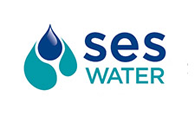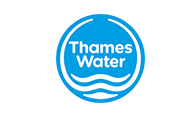The role of demand management in futureproofing our water supplies
Over the last 20 years, the amount of water put into supply in the South East has fallen by 21 million litres per day – despite the population growing by more than 3.5 million. This means there has been no net increase in the amount of water being taken from the environment.
However, due to the impacts of climate change, sustainability reductions and population growth; alongside the need for water companies to increase resilience to extreme droughts; we could need around 2.6 billion extra litres of water every day by 2060. Although, this will depend on which of the various scenarios we’ve planned for occurs. Some of this will be delivered through new sources such as reservoirs and water recycling, but a large of proportion will come from reducing how much water is used and wasted.
Reducing demand for water is major part of our emerging regional plan – accounting for just over half of the extra water we need by 2040. Water companies have committed to reduce leakage by 50% by 2050 and our emerging regional plan forecasts they will be saving 300 million litres per day by 2060.
The other side of the equation is supporting customers to use less water – saving more than 400 million litres of water per day by 2060. Increasing the roll of meters – including smart devices – is crucial to achieving this and enabling more targeted communications programmes.
Andrew Tucker, Water Demand Reduction Manager at Thames Water, has answered some of the most frequently asked questions about their work and what they’ve found.
- When did your programme start and how many meters have you installed? We started installing Advanced Metering Infrastructure (AMI) smart meters in 2015. So far, we’ve installed more than 570,000 smart meters in London, providing over 15 million reads every day.
- How much water does the average home use? The average house uses over 400 litres every day, with some larger homes using over 5,000 litres! However, about a quarter of homes use more than 500 litres per day.
- Do water efficiency visits work? Our visits help households save an average of 74 litres per day by installing water saving devices and finding and fixing leaks, especially in high using households.
- What happens with blocks of flats? There are lots of homes that can’t be metered individually, usually because they’re in blocks of flats or converted buildings. However, smart meters covering the whole building are showing around 30 percent of the total water could be being lost to leaks and internal wastage (such as from leaky loos). Metering means we’re able to target our home visits and communications campaigns.
- How water efficient are new homes? While building regulations require new homes to achieve a target of between 110 and 125 litres per person per day, our smart meters are showing they are actually between 119 and 179. And despite being newly built, up to 9% of new homes could have leaks – leaky loos happen in new and old homes!
- What about businesses? How much water is lost there? Our data shows around a quarter of all water delivered to non-household premises is continuous flow. Some will be genuine usage, but there’s a chance a lot of this will be leakage or wastage – highlighting a big water saving opportunity
- What’s the most important thing you’ve learned from your metering programme? Hourly data is king for reducing leakage, improving efficiency and helping protect our precious environment
- After metering, what are the biggest opportunities and priorities for helping customers use less water? WRSE’s emerging regional plan identifies the need for – and substantial benefits of – some policy changes. Government has already committed to introducing water labelling and combining that with minimum standards for water using devices and amending building regulations to make new homes more water efficient could save an extra 190 million litres per day by 2060 and potentially avoid almost £3 billion of investment in new, less environmentally friend sources.
To read more about the role of demand management, including ambitious leakage and demand reduction strategies, click here to read our full emerging plan consultation and have your say.






